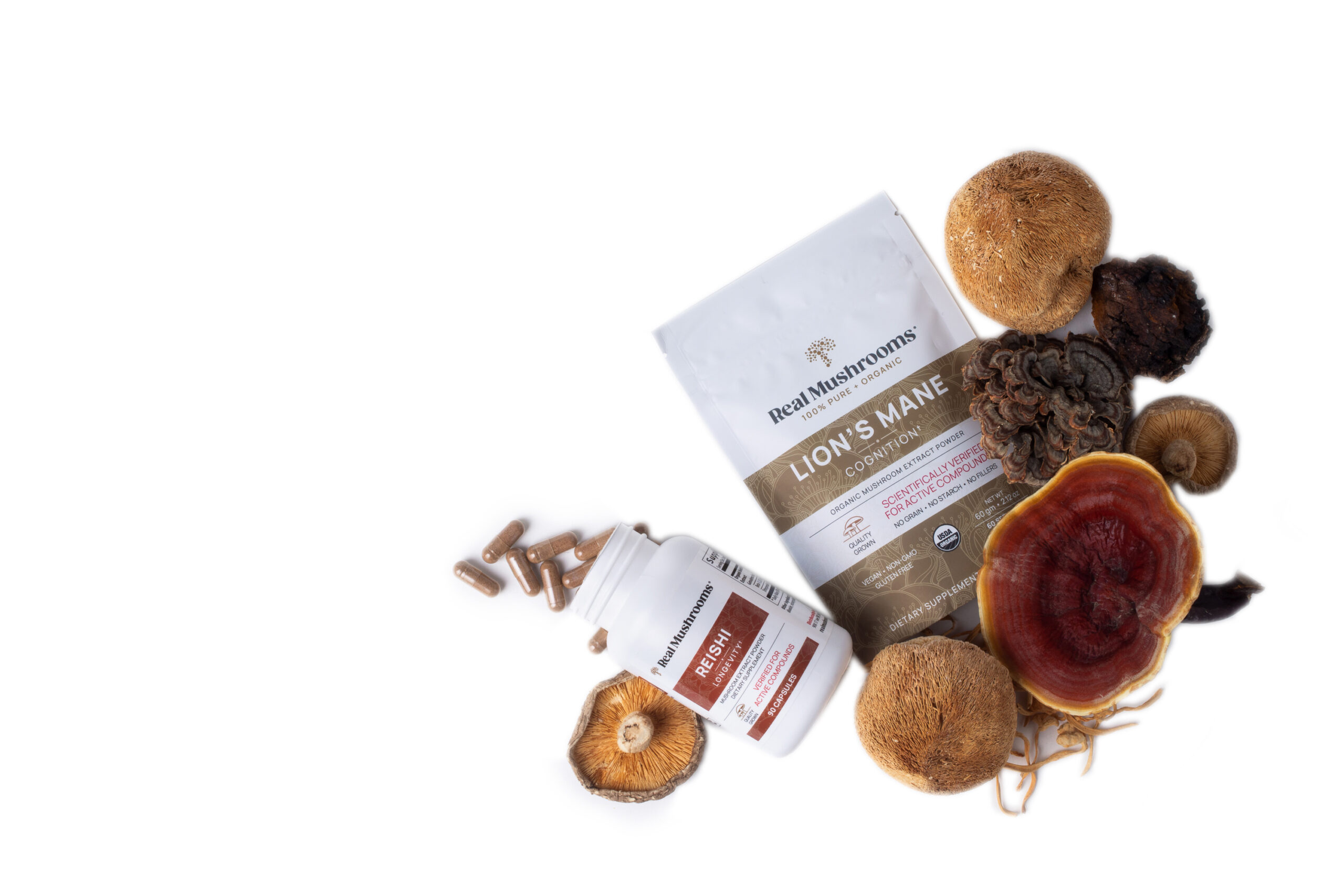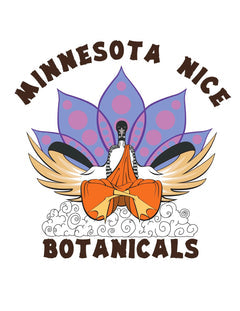Howdy Mycopreneurs,
Today’s Mycopreneur Newsletter is written by guest contributor Sydney Gibson, a soil biology researcher and mushroom cultivator based in Arkansas. Please note that there is no Mycopreneur Incubator today due to scheduling overlap with the Psychedelics Design Awards that I’m hosting all day.
Thanks for subscribing to the Mycopreneur Newsletter, and please let us know what you think of Sydney’s piece! If you have interesting mushroom research, an innovative new product, or a POV from your experience as a mushroom researcher or entrepreneur that you’d like to share with the Mycopreneur network of 30k plus mushroom entrepreneurs and enthusiasts, please get in touch ( :

The Mycelial Afterparty
By Sydney Gibson
Most people think a mushroom’s job ends once it’s picked, packaged, and sautéed in butter. But what if I told you the real magic starts after the harvest?
As a biology student, single mom, and full-time soil nerd, I’ve spent the last year getting my hands dirty in a project I never expected to fall in love with: researching spent mushroom substrate, or SMS. That’s the fancy term for the stuff mushroom growers toss after the mushrooms are done fruiting. Think straw, sawdust, coffee grounds, fungal threads; a funky, earthy, nutrient-rich mix that most folks overlook.
But what I’ve found is that this so-called waste might be one of the most powerful allies we have for healing our soil and rebuilding our relationship with the land.
This article isn’t just about compost. It’s about a mycelial afterparty. A second act for fungi that’s been hiding in plain sight. It’s about carbon, microbes, and the quiet brilliance of systems that don’t need to be reinvented just rediscovered.
What is Spent mushroom substrate (SMS)?

Spent Mushroom Substrate (SMS) is what’s left behind after mushrooms have finished growing. If you’ve ever peeked into a fruiting chamber or mushroom bag, you’ve seen it; a dense, earthy mass of whatever the fungi were fed: straw, sawdust, coffee grounds, soybean hulls, coco coir, or even corn cobs. It’s mixed with mycelium (the root-like network that produces mushrooms) and often looks like compacted soil or mulch, but with a fungal twist.
Commercial mushroom farms produce tons of this stuff. literally. And once the mushrooms stop fruiting, the substrate is usually sent to a landfill, despite being full of life. It still contains enzymes, beneficial microbes, lignin-degrading fungi, and often more nutrients than the soil it’s dumped onto. In fact, depending on how many flushes were harvested, SMS can retain significant amounts of nitrogen, phosphorus, potassium (NPK), and organic carbon, which are the very building blocks of fertile soil.
The Problem: Depleted Soil and Agricultural Waste
Let’s talk dirty. Literally.
Over the past century, industrial agriculture has done a number on our soil. We’ve over-tilled it, over-fertilized it, and pumped it full of synthetic chemicals to force short-term yields. But soil isn’t just a growing medium it’s a living ecosystem. And right now, it's exhausted.
Many U.S. soils have lost over 50% of their organic matter, which is the carbon-rich material that feeds microbes, retains moisture, and keeps nutrients cycling. Without it, we get dustbowls, runoff, and food that’s high in volume but low in vitality. Even compost, when used alone, often can’t make up for years of degradation.
Meanwhile, mushroom farms and other agro-industries are generating mountains of waste. For example, just two coffee processing plants near me toss out around 16,000 pounds of spent coffee grounds a day and that’s just coffee, (which could be repurposed into oyster growing blocks…but I digress.) Add mushroom farms to the mix, and we’re looking at millions of tons of SMS worldwide being discarded or underused.
(From our sponsors: Real Mushrooms have 40 + years experience at the forefront of the medicinal mushroom industry crafting best in market supplements. I personally have been consuming them for over a year to great effect. Trust the experts!)
Here’s the irony: while farmers spend big money on synthetic fertilizers, mushroom growers are tossing out a resource rich in nutrients and microbial life a resource that could literally revive the land. Without proper waste management specifically for SMS pick-up, mushroom farmers really don’t have a choice, but to throw out the SMS if their businesses profit is coming from the mushrooms.
That’s where my research comes in.
My Research: Testing the Power of SMS
For my undergraduate research at the University of Arkansas at Little Rock, I set out to answer a surprisingly overlooked question: what happens if we don’t throw out mushroom substrate after the harvest? Could that so-called “waste” still serve a purpose?
To find out, I ran a comparative test between two soil groups — one control group and one amended with partially spent mushroom substrate (SMS) from oyster mushrooms. I grew the mushrooms on a blend of soy hulls, cottonseed hull pellets, and fuel pellets (wood-based), and collected the substrate right after its second flush.
I sealed both the control and SMS-treated soils in test containers and monitored them over several days. Using a CO₂ meter, I tracked carbon dioxide output to estimate microbial respiration, which is a strong indicator of life and activity in the soil. I also conducted basic tests for pH and nitrogen levels (ammonia and nitrate) and kept an eye on texture and moisture.
Here’s what I observed:
CO₂ production was significantly higher in the SMS-treated soil, especially during the first few days. This suggested heightened microbial and fungal respiration — basically, the soil was alive.
Even after a slight decline in CO₂ levels mid-experiment, the SMS soil bounced back while the control stayed low, pointing to greater ongoing biological activity in the amended soil.
pH readings showed the SMS soil remained slightly more acidic than the control, hinting at active microbial breakdown and organic acid release.
Nitrogen cycling improved over time. Nitrate levels rose steadily, and ammonia stayed relatively stable: a pattern consistent with active microbial processing.
Visually and texturally, the SMS soil retained moisture better, had a darker, richer appearance, and developed a crumbly, well-aerated structure that gardeners dream about.
Bottom line: this “waste” product was far from lifeless. It stimulated microbial activity, improved soil structure, and enhanced nutrient cycling all without the use of synthetic fertilizers.
Was it a massive, multi-year lab trial? No. But it was a meaningful, boots-on-the-ground experiment that gave real, measurable insight into SMS as a regenerative soil amendment.
(From our sponsors: Minnesota Nice Ethnobotanicals is the highest quality, most trustworthy source for decarboxylated Amanita muscaria mushrooms and a host of other legal entheogens that I’ve yet found. I love their Shilajit too. Check their site out below for turnkey access to a “Different kind of microdose” that’s 100% legal.)
Why this matters
This research wasn’t just an academic exercise for me. It felt more like a conversation with nature. I’ve always been drawn to the quiet forces that sustain life: the roots working in silence, the microbes moving unseen, the mycelium threading through the soil like a living language. Fungi, to me, are more than decomposers. They are collaborators in the cycle of renewal. As a student, mother, and mushroom cultivator, I’ve come to see science as both inquiry and reverence. Spent mushroom substrate holds a kind of quiet wisdom; the story of transformation still unfolding. It reminds us that in nature, endings are often beginnings in disguise.
We’re in a moment where our systems: agricultural, ecological, economic are cracking. The soil is tired. The climate is shifting. Farmers are burning out. And yet we continue to discard resources that could restore balance. Spent mushroom substrate is one of those overlooked solutions. It’s not flashy. It’s not high-tech. But it works.
By repurposing SMS, we can reduce waste and revitalize the land. We can boost microbial life without synthetic inputs, support climate resilience through carbon retention, and close the loop between food production and ecological care. It’s a win-win-win for growers, for the planet, and for communities on the front lines of food insecurity and environmental degradation.
And this isn’t just about soil. It’s about mindset. It’s about learning to see value in the things we were taught to throw away, not only in agriculture, but in ourselves, each other, and the world around us.
What’s Next
I’m expanding my studies in soil biology and working toward a future where fungi play a central role in regenerative agriculture. I’m experimenting with different types of spent mushroom substrate, testing how they influence carbon cycling, nitrogen retention, and microbial diversity in the soil.
I’m currently manifesting a community-scale systems where SMS is collected, refined, and returned to the land. Where mushroom farms partner with local growers. Where waste becomes nourishment not just for plants, but for entire ecosystems.
(Editor’s note: Look out for our forthcoming podcast episode with Stdney to dive deeper into the magic of spent mushroom substrate and her research into regenerative soil practices. Thanks for reading the Mycopreneur Newsletter and please consider forwarding this to a friend and sharing it on your socials. See you all next week!)
And before you go: I’ve switched my morning coffee intake 100% to Mycroboost mushroom coffee and let me tell you…it’s a game changer. I’m doing this for a full month to A/B test the effects of regular coffee - which I drink copious amounts of despite the adverse effects (jitters, 2 pm crash, anxiety, etc.) and Mycroboost mushroom coffee, which is packed with superfood mushrooms in place of the over-caffeination stimulation from a regular cup of coffee. I’ll keep you all updated on this experiment, which has been a huge benefit to my overall energy and sense of vitality in the first three days of drinking exclusively mushroom coffee -grab yours below and see for yourself:


